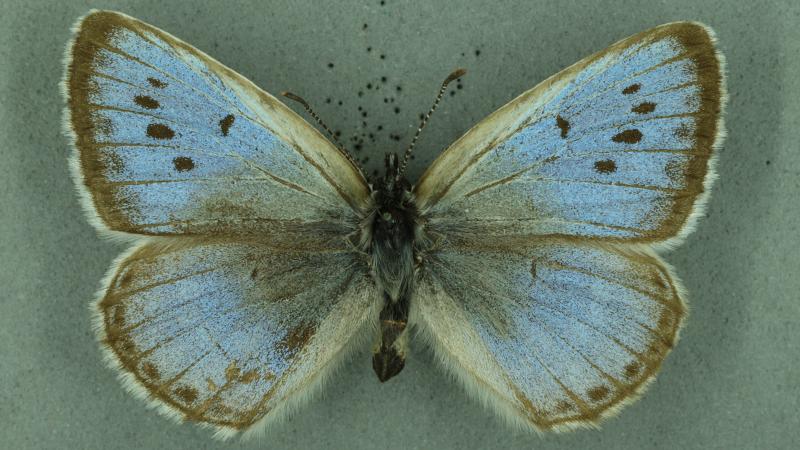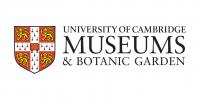
Pictured: large blue, Phengaris arion
200-year trend in Cambridgeshire: No change.
Modern records
The large blue is not mentioned in Jenyns’ notebooks and is unlikely to have ever been a resident in the county, despite some dubious historical records. However, this species is a great success story for conservation in the UK.
The original UK population went extinct in 1979 but was then reintroduced from Sweden a few years later and the UK now hosts some of the densest populations anywhere in the world. Its decline and eventual extinction lead to extensive research of its life cycle in order to try and understand why it was disappearing. This led to a better understanding of its amazing interaction with ants. In the UK, one species of red ant ‘adopts’ the large blue’s caterpillars, which use chemical and acoustic mimicry to trick the ants into thinking they are their offspring. The ants find the caterpillars and carry them back to their nest for protection. The large blue caterpillar then eats the real ant grubs, grows and pupates, with an adult butterfly emerging from the ants nest a year later.
The specific host ant of the large blue butterfly has extremely specific temperature requirements and needs very warm ground under short vegetation, or else it is outcompeted by other ant species. This was not previously known and a lack of grazing, coupled with an outbreak of myxomatosis wiping out rabbit populations during the mid 1900s, meant that vegetation across the UK grew taller. This shaded and cooled the ground, which caused the host ant, and in turn the large blue butterfly, to decline. The ant species is now managed for with grazing and mowing programmes, which has supported the successful reintroduction of the large blue.
National records map
Large blue national records map:https://species.nbnatlas.org/species/NHMSYS0020757917





